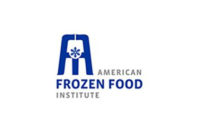TECH FLASH
House holds hearings on Renewable Fuel Standard
Lawmakers heard from stakeholders on both sides of the issue over two days.


The House Subcommittee on Energy and Commerce held two days of hearings on the Renewable Fuel Standard (RFS), hearing testimony from three panels of stakeholders including fuel users, developers and the agriculture and environmental communities. The hearings follow a June 26 subcommittee hearing reviewing government implementation of RFS, as well as the release of five white papers on issues relating to RFS.
RFS is a provision of the Clean Air Act established by the Energy Policy Act of 2005 and expanded by the Energy Independence and Security Act of 2007. It sets targets and timetables for adding renewable fuel (corn-derived ethanol and advanced biofuel), cellulosic biofuel and biomass-based diesel to the US energy supply.
The target for production of all four fuels in 2013 is 16.55 billion gallons; no more than 13.8 billion gallons of this can be corn ethanol. A maximum of 15 billion gallons of ethanol may be used in 2015.
According to the hearing briefing document, there have been unanticipated implementation challenges and successes over the five years since RFS was revised. Points of contention include blend wall and fuel compatibility, EPA’s waiver to allow up to 15 percent ethanol blends and the interaction between EPA’s fuel economy standards and RFS.
Farmers have cited RFS as a significant contributor to the increased price of animal feed and, in turn, the increased price of all agricultural commodities. Roughly 40 percent of the nation’s corn is turned into ethanol in distilleries, and though that process turns about 14 percent of the corn into dried distillers grain for animal feed, many farmers say the grain shortfall is too large. In the eight years since Congress implemented RFS, US corn cultivation has increased from 79 million to 90 million acres.
“RFS’ business disruptions directly impact the over 25,000 family farmers who grow the chickens, and the more than 300,000 employees directly working for the chicken companies,” says Tom Super, vice president of communications at the National Chicken Council. “Since October 2006 through this month, July 2013, poultry and egg producers have had to bear the burden of higher feed costs totaling over $50 billion. The $50 billion higher feed costs is not the total feed bill, but rather the increase over feed costs if corn and soybean meal prices had remained somewhat steady at the pre-2006 levels.”
Super says although renewable fuels are important to the US energy mix, preferential policy for ethanol has curtailed other renewable alternatives while distorting corn markets. Farmers have experimented with dried distiller grains, but the grain’s low energy and protein content along with poor amino acid balance, variability of quality and composition and digestibility issues have kept farmers from using it for more than five percent of the chicken feed ration.
Looking for a reprint of this article?
From high-res PDFs to custom plaques, order your copy today!




